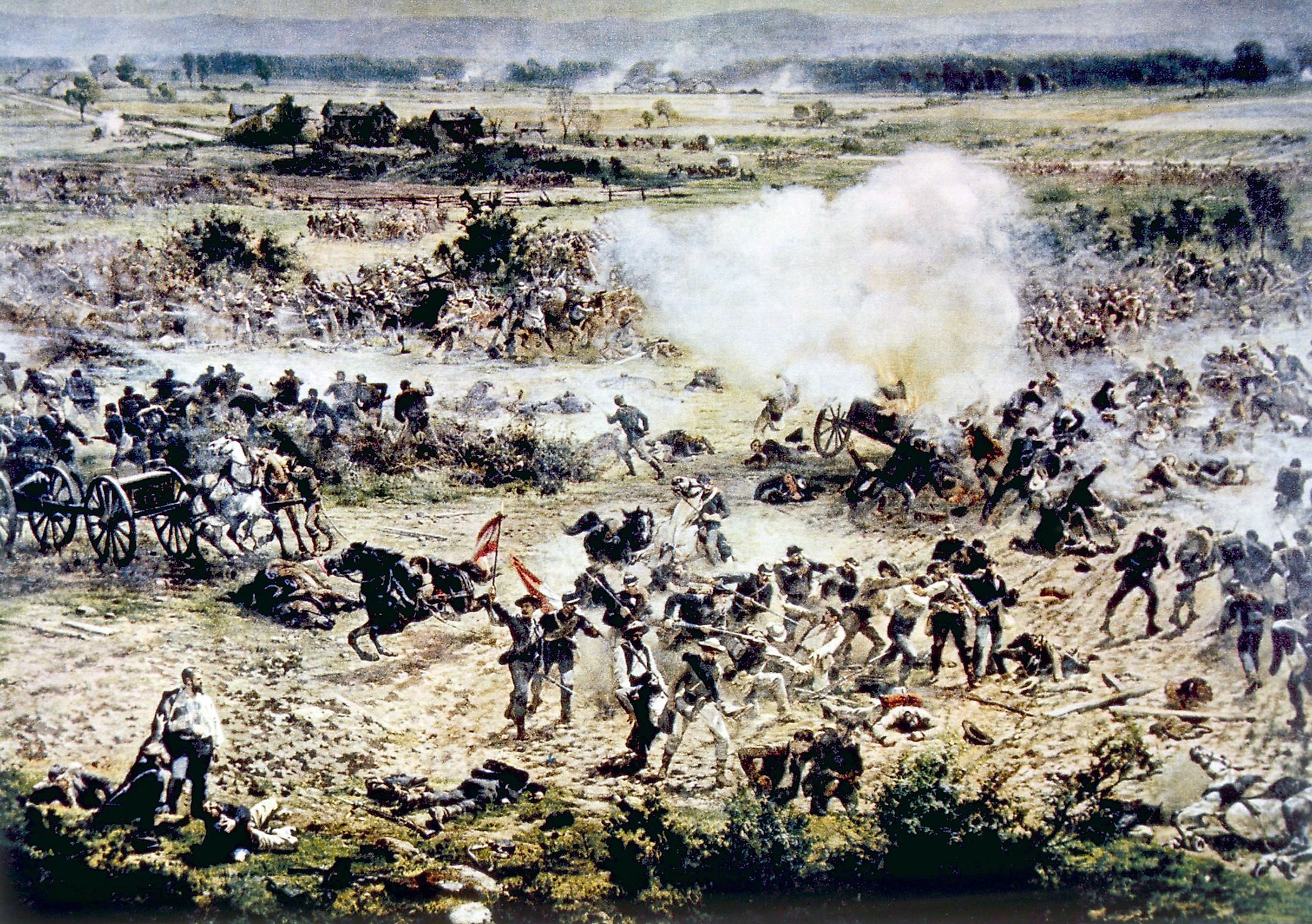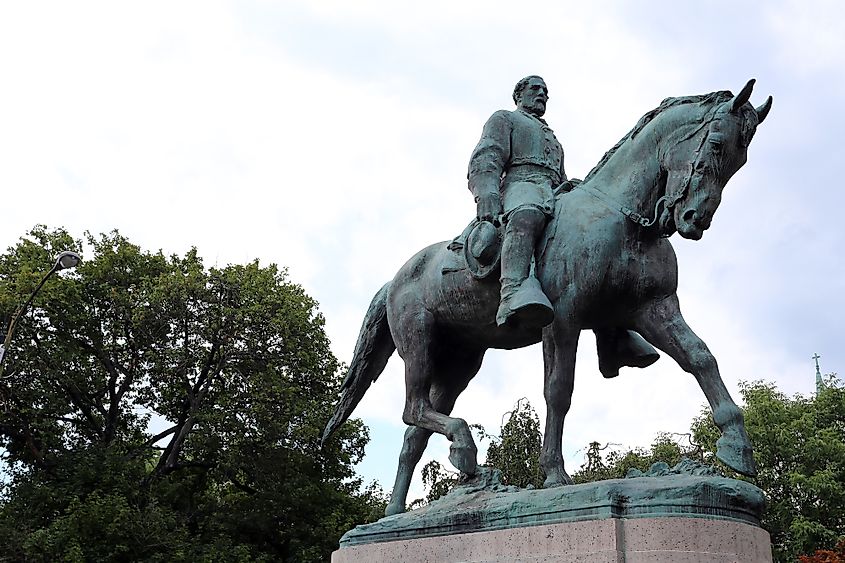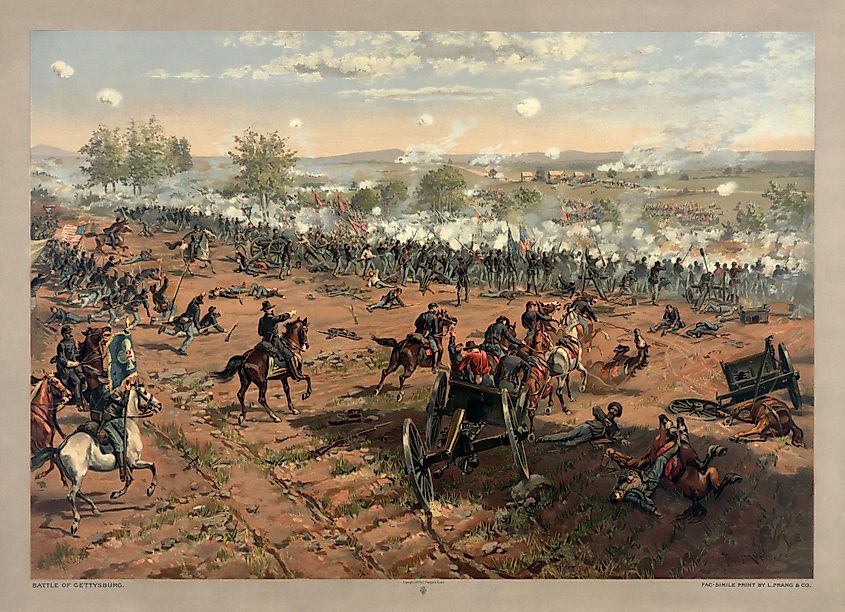
Gettysburg: America's Bloodiest Battle
Often referred to as the turning point of the American Civil War, the Battle of Gettysburg would decisively end the Confederacy's push northward into Union territory and put the South on the defensive for the remainder of the war. Despite piggybacking off a slew of stunning Southern victories over the North, Gettysburg would forever turn the momentum in favor of the North and would begin the slow but inevitable defeat of the Confederacy. The Battle of Gettysburg was both the largest and bloodiest of the war, claiming the lives of thousands of soldiers and injuring and maiming tens of thousands more. Not only would the battle's outcome decide the war's fate, but it would also send shockwaves through the American public and beyond.
Overview Of The Battle Of Gettysburg

The Battle of Gettysburg took place on July 1, 1863, and lasted three days. Under the command of the legendary Confederate General Robert E. Lee, the Army of Northern Virginia marched into Pennslyvania in the early summer of 1863 after defeating Union forces only a few months prior at Chancellorsville.
The Union was well aware of Lee's intentions to invade further and dispatched an army under the control of General George G. Meade. Meade was a new replacement for General Joseph Hooker, who had been under command of the Northern Army of Potomac when they were defeated at Chancellorsville. It was not lost on Meade of the importance of trying to halt Lee's invasion.
Lee had hoped that if he put enough pressure on the Union, he would gain recognition not just from the Union itself but from European powers such as France and Britain. With enough support, he could sue for peace and ensure that the Confederacy would officially be recognized as a nation totally separate from the United States.
Prelude To The Battle
In late June, Lee's offensive was in full swing, and his 75,000-strong army crossed the Potomac River into Maryland and then into Southern Pennslyvania. Both sides utilized spies and scouts on horseback to track the movement of the enemy's army. It was clear to both Lee and Meade that their forces would converge on the small town of Gettysburg to try and set up defensive positions. Small skirmishes occurred between both forces, with the Union taking a slight victory. The Union captured Gettysburg a day before the bulk of Lee's army arrived using two cavalry brigades. Seeing that the Union army was only close by, Lee pressed the attack. The Battle of Gettysburg had begun.
Day-by-Day Account
Day 1

The first day of the battle opened up with an attempt from Lee to drive the Union cavalry from the town. Led by Richard Ewall, the replacement for the near-mythical Thomas "Stonewall" Jackson, who had been killed at Chancellorsville, led the main assault. The Union cavalry tried their best to resist but could only do so much as they were heavily outnumbered. They were eventually driven from the town and forced to take refuge on Cemetary Hill, a ridge overlooking Gettysburg just half a mile south from town.
Seeing that the bulk of the Union forces had not yet arrived, Lee ordered Ewall to press the advantage and attack Cemetary Hill, but Ewall refused. Ewall was convinced that the Union position on the hill was too well protected and that attacking without proper preparation would have been suicidal. By the time the sun set on the first day, the bulk of the Union army had arrived and set up around Cemetary Hill and extended their battlelines all the way around to another hill called "Little Round Hill."
Day 2
The following morning, Lee assessed the state of the battle and chose to attack the Union force in a pincer maneuver. One section of his force led by Ewall would attack Cemetary Hill, while another contingent led by James Longstreet would attack Little Round Hill. The attack by Longstreet and his men was meant to be carried out early in the morning, but Ewall could not organize an attack until 4 in the afternoon. This gave the defending Union troops ample time to prepare defenses. The fighting on Longstreets side was incredibly fierce, with both sides taking heavy casualties. Longstreet was incredibly close to capturing the hill but was stopped in his tracks by the 20th Maine Infantry Regiment. Their tenacity and bravery of the Maine Regiment almost singlehandedly saved the flank of the Union army.
Ewall was having similar difficulty attacking Cemetery Hill. The fighting was thick there as well, but the Confederates were unable to make any meaningful progress by sundown. By the end of the day, both sides suffered roughly 10,000 casualties each.
Day 3
In the early morning of the third day of battle, the Union launched a counterattack and pushed back any gains the Confederates had made on Little Round Hill the previous day. Lee was under the impression that he had almost won the battle at Little Round Hill the day before and was certain that taking the hill would be the key to victory. Lee ordered an all-out assault on Cemetary Ridge in hopes he would cause a mass route in the event Confederate forces were able to split the Union army. The attack was immediately protested against by Longstreet as he saw it as a reckless attack against a well-fortified enemy.

Lee ignored Longstreet and went on with the attack after battering the Union position with artillery. 15,000 Confederate soldiers pushed forward in what is now called Picket's Charge. The attack was nothing short of a disaster for the Confederates. The Union troops had dug in and forced the Confederates into a crossfire. Being shot from each flank, the Confederates were decimated. Two-thirds of the attacking force was either killed or wounded in the assault.
Casualties And Aftermath
After his calamitous attack, Lee set his troops up in a defensive position, waiting for the Union to launch a counterattack, but it never came. Meade was a notoriously cautious general and did not want to walk into a situation similar to what Lee and his men had just endured. The Battle of Gettysburg would start the beginning of the end for the Confederacy. They would never again threaten the North, and any hopes of international recognition were all but gone. The already waning manpower of the South was at an all-time low, and supplies were becoming scarce. The South would continue to fight for another two years, but it would all be in vain. Lee offered to resign as general, but Confederate President Jefferson Davis refused it.
The North, on the other hand, celebrated this victory like no other. Moral had been low in the Union army as many soldiers and officers alike had been unconvinced about the ability of Union leadership and generalship. When the dust settled, more than 23,000 Union soldiers died or were wounded. The Confederates suffered similar numbers, taking 28,000 total casualties.
The Legacy Of Gettysburg
![One of only two confirmed photos of Lincoln[1][2][3] (center, facing camera) at Gettysburg taken about noon on November 19, 1863](/r/w768/upload/63/d3/9f/lincolnatgettysburg.jpg)
Later that year, President Abraham Lincoln delivered his famous speech titled the "Gettysburg Address" at the National Cemetery at Gettysburg. The speech is now to be considered one of the greatest in the history of the United States despite it only being 2 minutes long. The National Cemetery at Gettysburg commemorated the dead soldiers of both sides and is a reminder to all those who visit just how devastating and destructive this war was on the United States. The memory of the Battle of Gettysburg is also kept by thousands of historical buffs and reenactors who reenact key moments of the battle using period-accurate clothing, uniforms, and weapons. These "shows" are held annually from July 1 to July 3.











